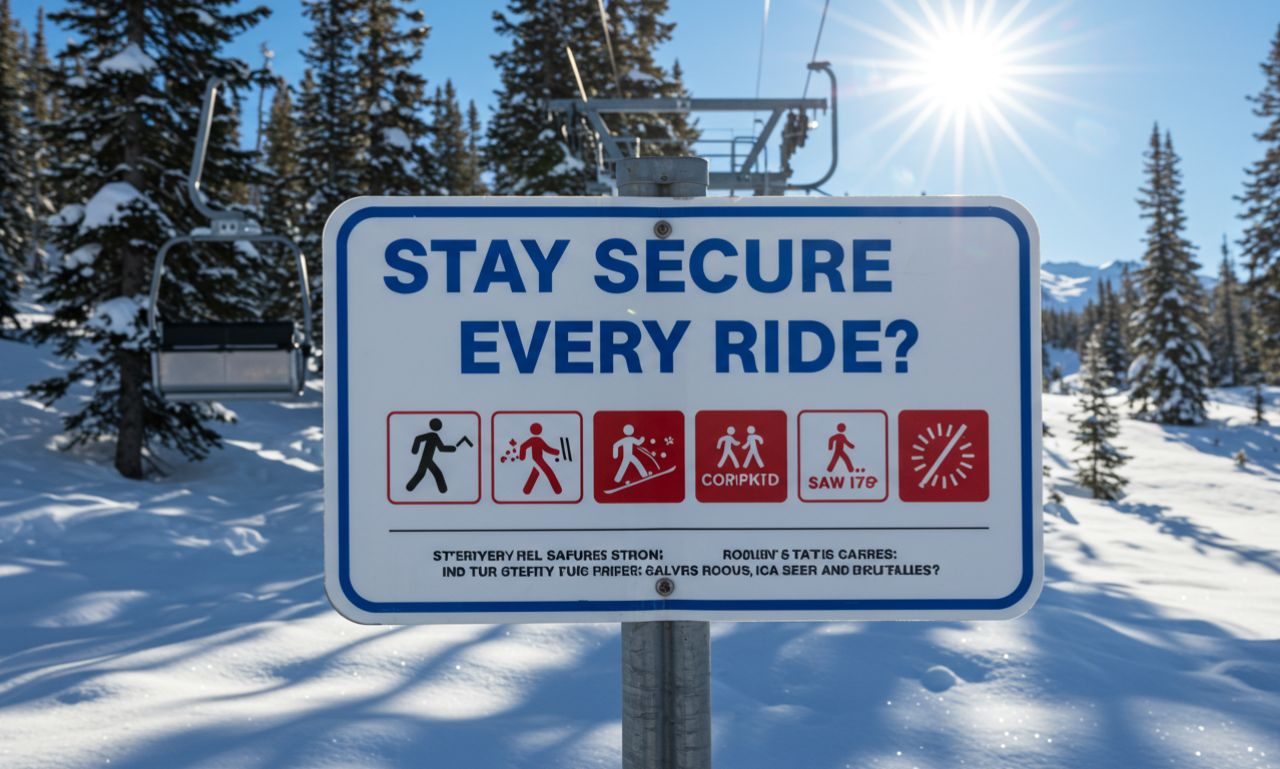
Riding an elevator (or lift) is part of everyday life. Yet many don’t pause to check whether the lift is actually safe. In many places, this sign shows when a lift is safe to use — a visual certificate, sticker, or tag that indicates inspection, maintenance compliance, and safe operation. Knowing what signs to look for can help you avoid hazards and ride with confidence.
In this article, you’ll learn:
-
What the “safe to use” sign typically looks like
-
Why those signs matter (safety, liability, regulation)
-
Key elements that signal a lift is safe
-
What to do if a lift has no sign or looks dubious
-
Trends in digital and smart signage for lifts
Safe-Lift Sign: What Does the Sign Show?
When you see this sign shows when a lift is safe to use, what exactly might that sign display? Typical content includes:
-
Inspection / certification date — The last date the elevator was inspected and the next due date.
-
Inspection authority or agency name — The body or inspector who approved it.
-
Load / capacity limit — Maximum weight or number of persons allowed.
-
Serial, license, or registration number — A unique code tied to that elevator.
-
Signature or stamp — Of the certifying authority.
-
Validity period — How long this certificate remains in effect before re-inspection.
This sign is not ornamental. It is a required indicator in many jurisdictions that the lift meets safety standards and is cleared for passenger use after inspection.
Why a Safe-Lift Sign Matters
Safety assurance for users
Seeing a valid, up-to-date inspection sign gives confidence that the lift’s mechanical systems, brakes, cables, doors, controls, and emergency systems have been checked. If the sign is missing or outdated, that’s a red flag.
Regulatory compliance and accountability
Building owners and elevator operators often must comply with local codes or international standards (e.g. ASME, or local elevator safety laws). The sign is proof that inspections have been carried out.
Liability and legal protection
If an accident happens, having documented inspection signage can help show due diligence. Conversely, absence of a certificate sign can increase legal exposure for building operators.
Maintenance tracking and transparency
The sign reminds building staff and maintenance crews when the next check is due, and helps users report issues. It also helps regulatory agencies audit compliance.
Safe-Lift Sign Elements: What to Inspect
Next time you enter a lift, scan the signs. Here are signs that signal safety:
1. Valid inspection certificate / tag
A clear plaque or sticker inside the lift (often above the door frame or in the car) stating “Inspected on [date] by [agency] — Next due [date].”
2. Capacity and load plate
Stated weight limit in kg or lbs and maximum number of persons. E.g., “Max 1000 kg / 13 persons.”
3. Inspector’s signature or seal
A stamp, signature, or embossed seal from the regulatory body or certified inspector.
4. Serial or registration info
Lift registration number, license, or code that ties the sign to that specific elevator.
5. Validity period
Specifies when the certificate expires or needs renewal. If the sign is past its date, that’s a warning.
6. QR code or digital display (in modern lifts)
Some newer systems embed QR codes or digital displays linking to inspection records or real-time status.
7. Emergency contact
Some signs include the maintenance company or safety hotline so users can report problems.
If one or more of these elements are missing or illegible, the trustworthiness of the lift’s safety is weakened.
Common Locations & Visibility of the Sign
Where to look for this sign shows when a lift is safe to use:
-
Inside the lift car (on wall or ceiling)
-
In the door-frame or door jamb
-
Near control panel or above buttons
-
In machine room or inside a service panel
-
On the main lobby entrance near the lift
A well-placed sign should be clearly visible, unobstructed, and legible under normal lighting conditions.
What If the Sign Is Missing or Expired?
If you step into a lift and see no safety sign or an expired certificate, here’s what to do:
-
Don’t assume it’s safe
Absence of a sign is not harmless — it could indicate neglect or missed inspections. -
Check nearby signage or lobby board
Sometimes inspection status is posted in the building lobby or elevator hallway. -
Ask building management or maintenance
Request confirmation: “When was this lift last inspected?” -
Report the issue
Use the emergency contact or property office to alert staff. -
Avoid risky behavior
Don’t overload, push through closing doors, or rely on fast movements in questionable lifts. -
Document with photo
A picture of missing or expired signage can help enforce action later.
If a building refuses to provide proof of inspection and the lift remains uncertified, avoid using it until resolved.
Regulatory Standards & Oversight
In many jurisdictions, lift (elevator) safety is regulated by law or building codes. Inspectors issue certificates under standards such as ASME A17.1/CSA B44 in the U.S. or equivalent local codes elsewhere.
The sign you see is the visible outcome of compliance with those codes — only after thorough inspection of structural components, cables, control systems, brakes, doors, emergency systems, safety interlocks, and more. (This is alluded in “This Sign Shows When a Lift Is Safe to Use” reference material).
Additionally, modern safety signage often aligns with international signage standards. For example, safety symbols often follow ISO 7010, which standardizes safety colours and pictograms (so that signs are quickly readable regardless of language)
In accessible design settings, signage must also meet ADA or tactile requirements, such as raised tactile letters or braille near elevator controls and on signs.
Beyond the Static Sign: Smart & Digital Certificates
The concept “this sign shows when a lift is safe to use” is evolving. Modern systems supplement the physical tag with smart features:
-
Digital displays or screens inside or outside lifts, showing live inspection status
-
QR codes or NFC tags linking to online inspection databases
-
IoT sensors monitoring vibrations, alignment, weight loads, brake wear, and signaling automatic alerts
-
Centralized dashboards used by building management or municipal regulators to track all lifts’ inspection status in real time
As buildings get smarter, the static certificate sign becomes one visible manifestation of deeper digital safety infrastructure.
Case Example: Missing Safe Sign Leads to Accident
In a documented case, a commercial complex experienced a serious elevator failure resulting in injuries. Investigators later found that the lift’s inspection sign had been removed during interior renovation, and the lift had missed its scheduled check by over a year. The absence of “the sign that shows it was safe to use” likely concealed serious maintenance lapses.
This example reinforces that those safety signs aren’t decorative — they reflect ongoing maintenance and regulatory oversight. When absent or altered, risk is real.
What Tenants & Visitors Should Do
To use lifts more safely, keep these checks in mind:
-
Glance for inspection tags, certification dates, load plate
-
Notice if the sign appears tampered or replaced
-
Check for QR codes or digital status indicators
-
Watch for unusual movement, noises, doors not closing evenly
-
Report suspicious lifts to building staff
-
Prefer lifts with clearly posted signs and contact information
Your vigilance complements technical safety systems.
Why Some Buildings Fail to Display Safe Signs
Reasons why a lift might lack the proper safety sign:
-
Renovations removed the plaque and never replaced it
-
The inspection was overdue and certificate lapsed
-
The inspector failed to affix or update the sign
-
The building manager doesn’t enforce compliance
-
The lift owner evaded regulation or maintenance
Regardless of reason, a missing or outdated sign should prompt caution.
Conclusion
This sign shows when a lift is safe to use is more than a label. It’s a sign of compliance, maintenance, safety, and accountability. Before entering any lift:
-
Look for inspection certificates with valid dates
-
Confirm capacity and registration information
-
Watch for clear, legible signage
-
Be wary if the sign is missing, expired, or tampered
-
Report issues and choose safer alternatives when needed
As elevator systems become more integrated with smart technology, these signs serve as visible gateways to deeper safety systems. The next time you ride a lift, take a moment — check the sign, confirm the safety, and ride with greater confidence.







